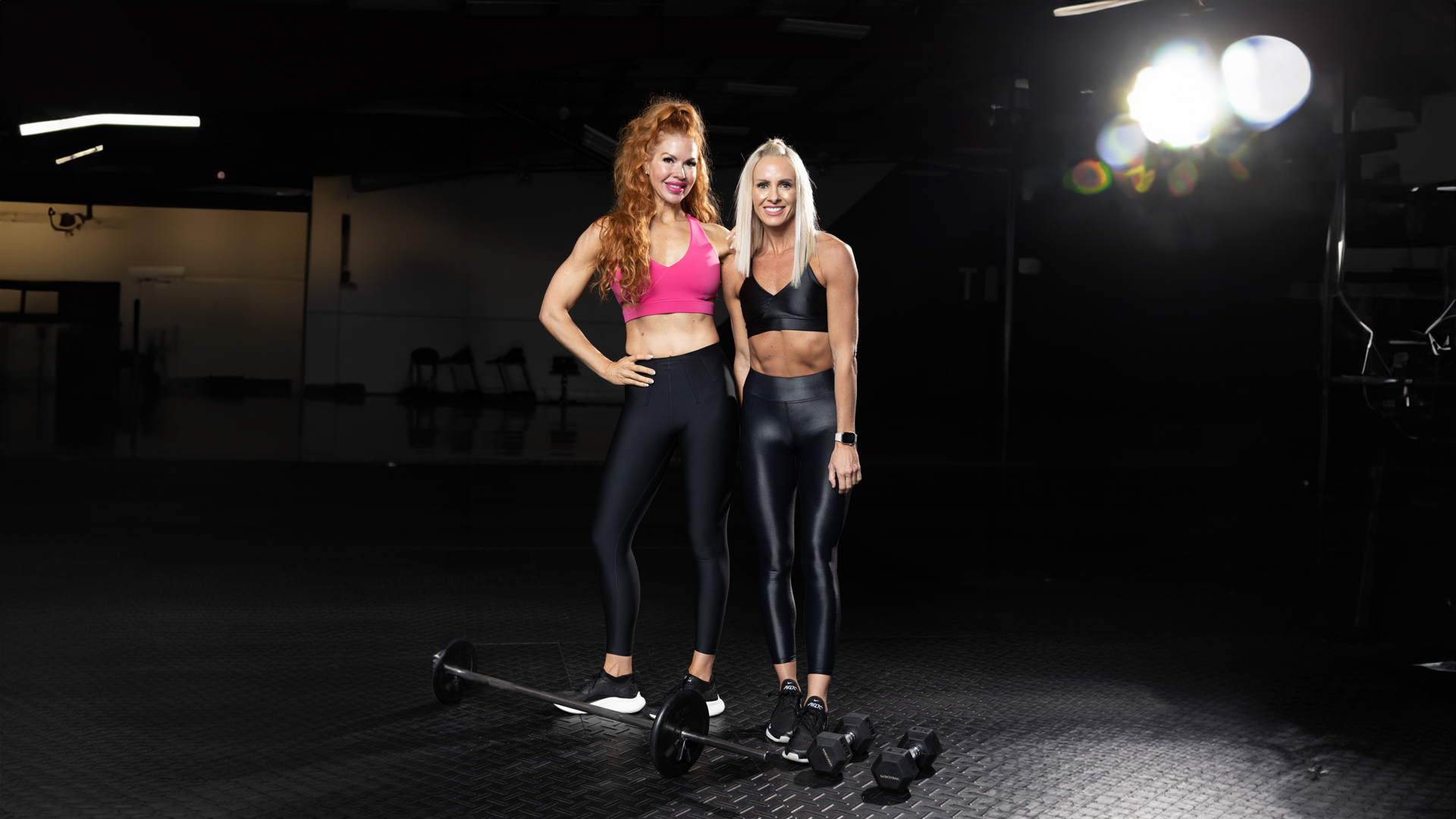
Like most classically trained Pilates Instructors I learned very little about basic exercise science during my Pilates certification course. I personally feel there is a huge void in traditional Pilates Teacher Training programs when in comes to basic exercise science. These programs do not teach the importance of cardio and or weight training. News flash, Pilates is not the perfect form of fitness, especially for women over 40. Women over 40 need to be lifting heavy weights in order to maintain muscle mass and healthy bone density. Yes Pilates is resistance training, but it is NOT enough! The reformer is a pulley system which can not create enough load to encourage muscle or bone growth. The majority of my clients come to my studio for health and fitness reasons which is why I strongly believe it’s important to train our clients appropriately by offering Pilates classes that include cardio and heavy weights. That being said, not all of our classes include cardio or weights, we still offer traditional pilates classes as well. Pilates is amazing and still my favorite form of expertise but on its own it’s not enough.
As for cardio, what type is best? It depends on your age and goals. If you are looking to build muscle mass and burn fat and are over the age of 40, hands down HIIT is the best option. It is also the easiest form or cardio to add to a pilates class.
What Is Aerobic Exercise?
Aerobic exercise is cardiovascular conditioning that strengthens both your heart and lungs. The word “aerobic” means “with oxygen” as this kind of exercise is fuelled by the oxygen that you get from breathing.
As you exercise, your muscles need more oxygen, which is carried by the blood, to keep going. This causes your heart rate to go up and makes you breathe deeply and quickly. While doing aerobic exercises, your small blood vessels get wider so that they can carry more oxygen to your large muscle groups, like the arms, legs, and hips.
When doing aerobic exercise, you should aim to do the activity for at least 30 minutes or longer. This kind of activity includes repeated, continuous movement. Think traditional cardio also know as SST (Steady State Training).
Aerobic Heart Rate / SST (Steady State Training):
Typically you subtract your age (I am 45 years old) from 220 to find your Aerobic heart rate. 220-45 =175 then multiply x .70 to find your ideal heart rate (mine = 122.5). So 120-125 is my target. Keep in mind you want to maintain this number for extended periods of time, 30-45 minutes.
What Is Anaerobic Exercise? (HIIT)
Anaerobic exercise is high-intensity exercises that’s meant to be short and fast. Your body doesn’t need oxygen as the source to keep your muscles going, but instead uses the energy that’s already stored in your muscles. Anaerobic exercises are only meant to be done for short periods of time, as these powerful movements usually can’t be sustained for long.
The main purpose of anaerobic exercise is to build muscle mass. When following an anaerobic exercise routine over the course of several months, your muscles experience hypertrophy. This causes them to increase in mass and power through the stretching, contraction, and damage done to the muscles during the exercise.
The most effective form of anaerobic exercise for weight loss and muscle gain/retention is HIIT (high intensity interval training).
As you can tell from the name, high-intensity interval training (HIIT) is challenging. It takes your workouts to another level, as you push your pace out of your comfort zone.
You can use HIIT with any type of cardio workout, whether it’s running, using a stair climbing machine, rowing, jumping rope or even PILATES!
You’ll work up a sweat fast, working at a very intense level and then backing off for a slower recovery period, followed by another round of high intensity.
That strategy can save you time: You don’t have to work out as long as you would if you were keeping a steady pace.
You’ll lose weight, build muscle, and boost your metabolism. Plus there’s a post-workout bonus: Your body will burn calories for about 2 hours after you exercise.
HIIT Heart Rate Range:
Typically you subtract your age (I am 45 years old) from 220 to find your MAX heart rate. 220-45 =175 then multiply x .85 to find your ideal HIIT heart rate (mine was 148.5). So 148-150 is my target. Keep in mind I only want to maintain this number for short periods of time. Depending on the exercise intensity I like to perform each exercise between 30-50 seconds with a 10-15 seconds rest in between for 3-4 minutes total.
If you are interested in learning more about how I like to create HIIT & Strength Reformer classes checkout my latest ON DEMAND digital workshop series, The Badass Pilates Collective. In this workshop I dive deep into the importance of adding HIIT & Strength into your weekly workouts and how to blend HIIT & Strength sequences into your favorite reformer flows.
Copyright © 2023 Tiffany Burke Pilates
